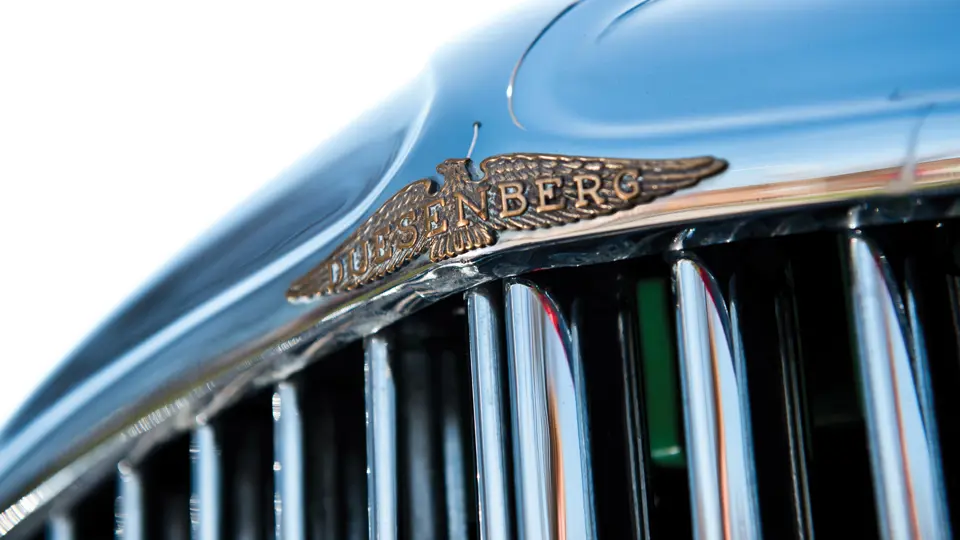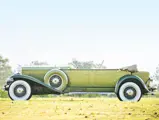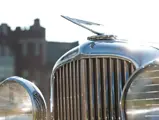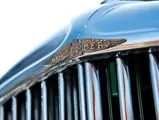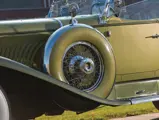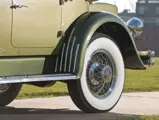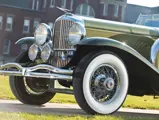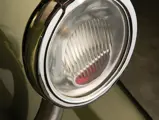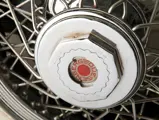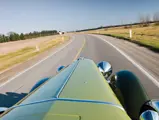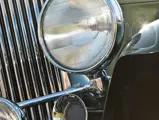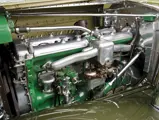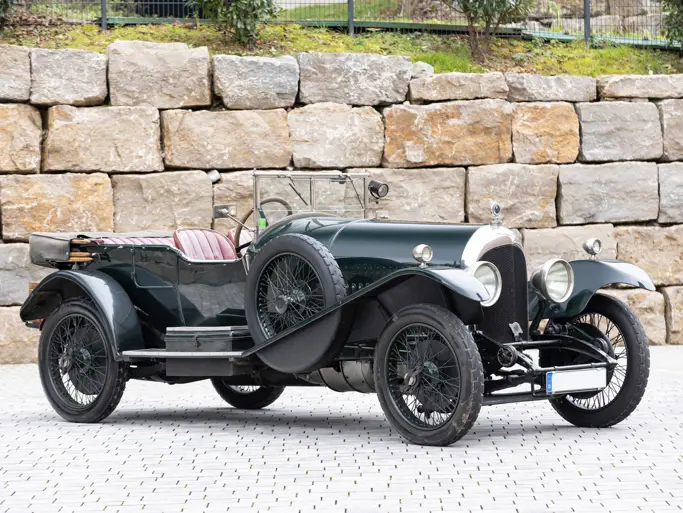265 bhp, 420 cu. in. DOHC inline eight-cylinder engine, three-speed manual transmission, beam type front and live rear axles with semi-elliptic leaf springs, and vacuum-assisted four-wheel hydraulic drum brakes. Wheelbase: 153.5 in.
• A genuine, original, real Derham Tourster
• “The needle in the haystack” that was found in Italy during World War II
• Offered from the collection of John Pascucci
The Tourster was Gordon Buehrig’s favorite Duesenberg. There is a lot to say about this handsome automobile, but the fact is that out of all of the creations that the master designer drew up for the mighty Model J, he preferred the Tourster, which speaks loudest of all.
The design was for a five-passenger touring car on the long 153-1/2-inch wheelbase Model J chassis, which in his 1972 autobiography, Rolling Sculpture, Buehrig described it as being “severely plain in ornamentation and [having] the unusual virtue of being equally handsome with the top in the raised position or when it is lowered.” The length of the chassis exaggerated the car’s lowered proportions, created by moving the rear seat ahead of the rear axle and the foot wells within the frame rails, which increased room for passengers while also allowing the top and sides of the body to be lower than on a standard phaeton.
With the Tourster, Buehrig also sought to solve a common problem of dual cowl phaetons of the time. They were often equipped with second windshields to give weather protection to rear seat passengers, but these windshields were mounted on hinged metal tonneaus that had to be clumsily swung up out of the way each time a passenger entered or exited the automobile. The Tourster’s solution was a rear windshield that slid up and down out of the back of the front seat with the turn of a crank handle, providing a windbreak that also looked appropriately dashing—and it stayed out of the way.
Toursters were built exclusively by the Derham Body Company in Rosemont, Pennsylvania, which had catered to the carriages, motorized and otherwise, of Philadelphia high society since the 1880s. Butler Hallanan was part of that high society, and so, naturally, a Derham Tourster was in his hands. In the end, he was one of eight people to order a Tourster in the 1930s. His car was 2440/J-423.
Reports that Hallanan’s Tourster, equipped with a unique metal trunk, was the New York show car have never been confirmed. Regardless, it saw regular use during the 1930s, and it is believed that Hallanan took it to Europe for grand tours at least once. The fun ended in 1939, when World War II reared its ugly head, and Hallanan apparently beat a hasty retreat from Italy to the United States, his Duesenberg, which had once more accompanied him on the journey, was left behind. Fortunately, someone apparently took pity on the Tourster, sheltering it from unfriendly eyes under a haystack in the Italian countryside, where it spent the remainder of the war in darkness.
Towards the end of the conflict, an American military officer uncovered the car in the haystack, from which it was soon freed. In 1946, it was sold to Dore Leto di Priolo, an enthusiast in Milan who recognized and appreciated the car’s importance. It was somewhat casually restored and remained in di Priolo’s care for the next two decades.
During this time, back in the United States, Anthony D. “Tony” Pascucci, a successful businessman from Connecticut, was making a name for himself as a collector of antique automobiles. Nowadays, this position would not be thought so unusual, but this was the late-1950s, and cars from the Classic Era and prior were beginning to gain notice. Pascucci’s foresight and thrill for the hunt enabled him to unearth, acquire, and sell truly fabulous examples of American and European automotive art, many of which are today the highlights of prominent collections.
Naturally, Pascucci, the connoisseur, appreciated Duesenbergs and owned several. In particular, he sought the phaetons, which even in this era were the Duesenbergs to own. With his sights set on the most desirable body styles available, the hunt was on.
The stable began with a LeBaron ‘Barrelside’ Phaeton, 2270/J-243, which Pascucci acquired, sold, and immediately missed. It was soon replaced with 2529/J-339, which was restored identically to its predecessor and, a lesson having been learned, never parted with. It was soon joined by a LeBaron ‘Sweep Panel’ Phaeton, 2336/J-487, another long-term acquisition.
Nonetheless, Tony Pasucci dreamed of Derham, and in 1968, he returned home from Milan, Italy with a very large souvenir indeed. With the purchase of 2440/J-423 from di Priolo, Pascucci did more than repatriate a great American classic, he became the first man to own an example of each of the catalogued Duesenberg phaeton body styles—a Triple Crown of great American Classic Era iron.
Vehicle number 2440/J-423 was taken to Ted Billing, of Shrewsbury, Massachusetts, whose well-respected shop ministered to many a Duesenberg over the years. Billing’s longtime friend, Al San Clemente, recalls the car as “a solid, mostly original car, with poor paint and some incorrect pieces. The doors shut well, and the wood was original and in good shape. All the specialized Derham hardware was still there. I was impressed with the car’s presence, even with the amateur paint. I had bought my Model J Murphy from Tony and tried, in vain, to get him to sell me this car.”
Pascucci was not to be moved, however, and soon Billing set about restoring the Tourster to concours condition. It was an easy task, as the body of the car was in excellent condition, including all of the original wood framework, none of which required replacement. The car was missing only the correct lights, all of which were replaced with proper units, many from Pascucci’s vast stash of Model J spares.
With the restoration complete in 1971, Pascucci took final possession of his prize, moving it into a heated garage. He later transferred ownership to his son, who has since continued the four-wheeled tradition, and as a result, his Tourster astoundingly remains very much as it did at the completion of its restoration, with only minor signs of aging, largely exhibited in hairline cracks and minor chipping to the paint in a few locations, such as below the trunk and around the edges of the doors. It has been very seldom driven and only occasionally shown to the public in the last 42 years, making a few appearances at the Auburn Cord Duesenberg Club’s National Reunion in Auburn, Indiana and at the Amelia Island Concours d’Elegance in 2010.
All that is behind it now and all that lies ahead is the future. A.J. “Tony” Pascucci, the enthusiast who was there “in the beginning,” brought many a car into his caring hands during in his lifetime, but he held on to 2440/J-423. After nearly half a century, the time has finally come for this beloved Duesenberg to pass to a new caretaker, who, along with the title, will be passed the torch of maintaining one of the eight original Derham Toursters, and therefore, perhaps the most desirable of all Model Js.
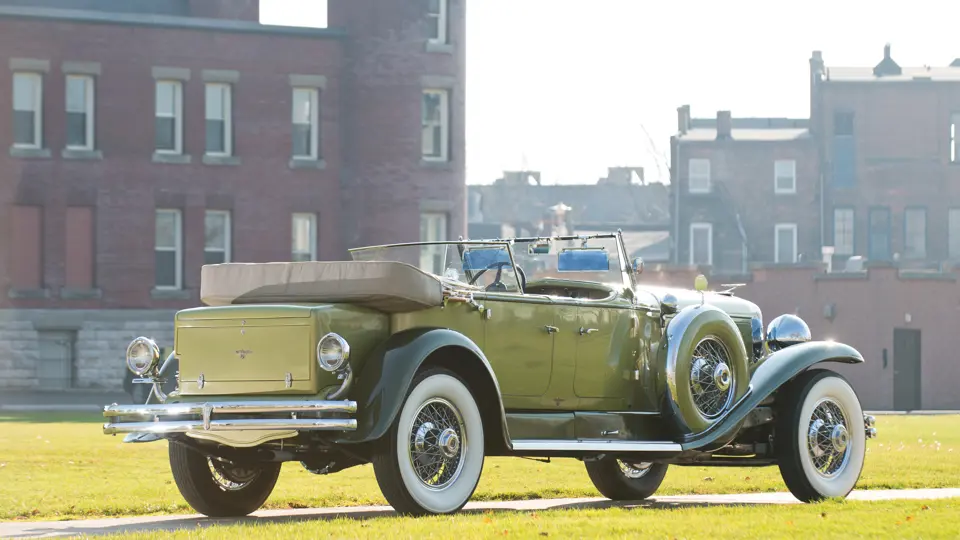






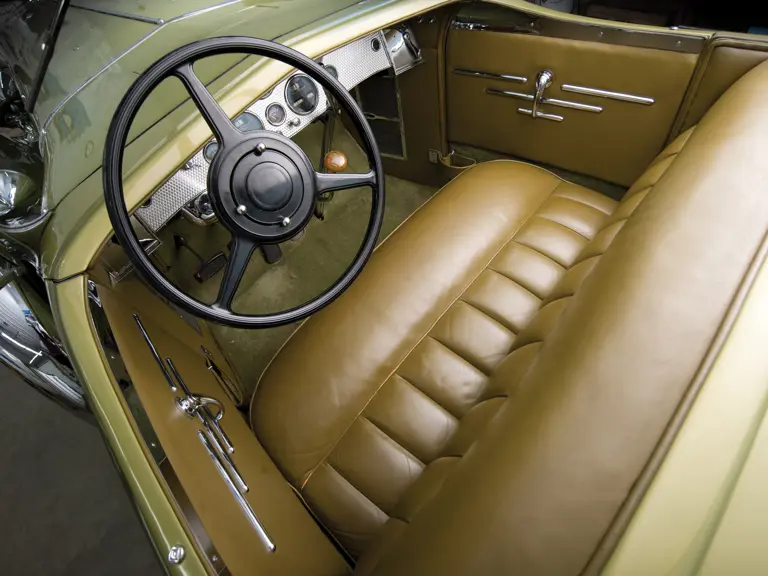
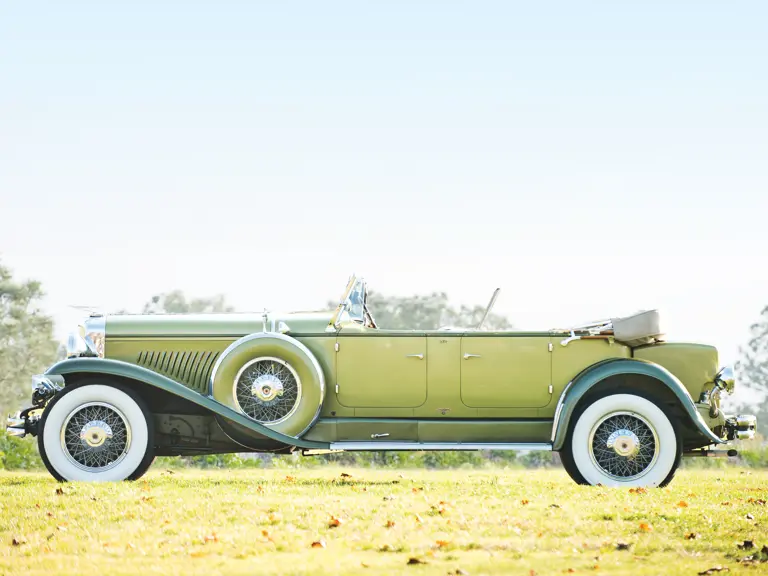
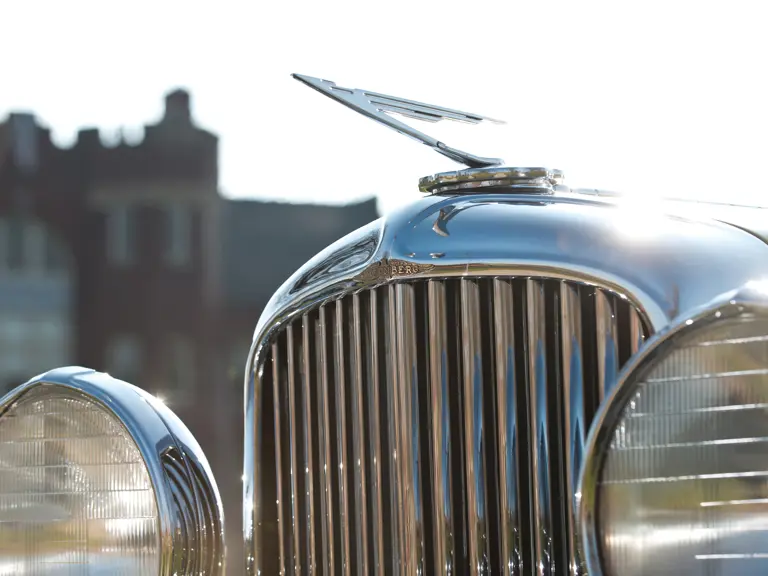

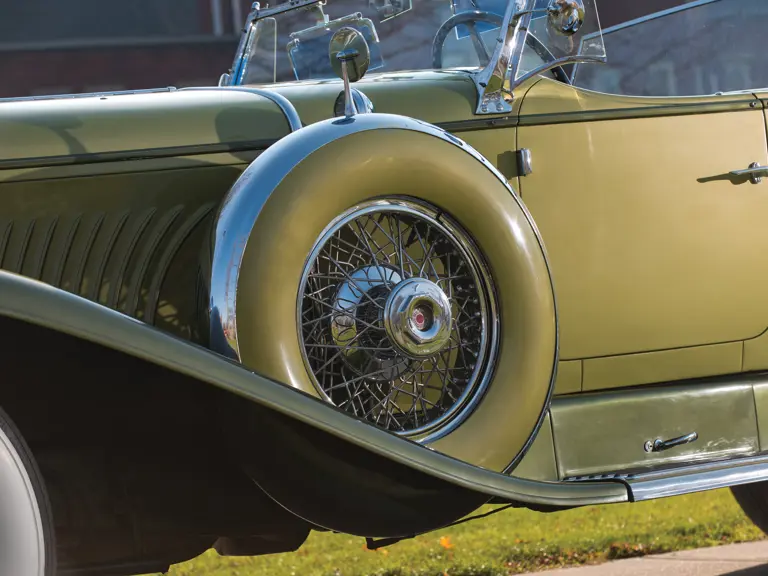

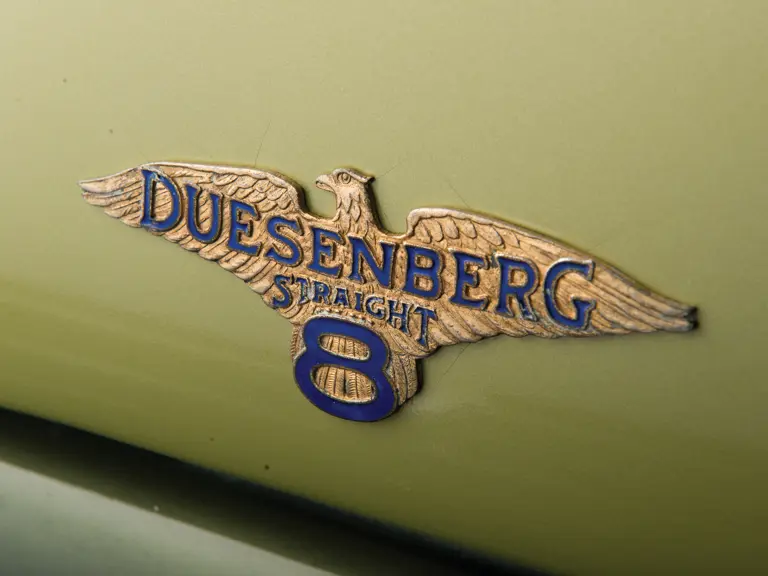
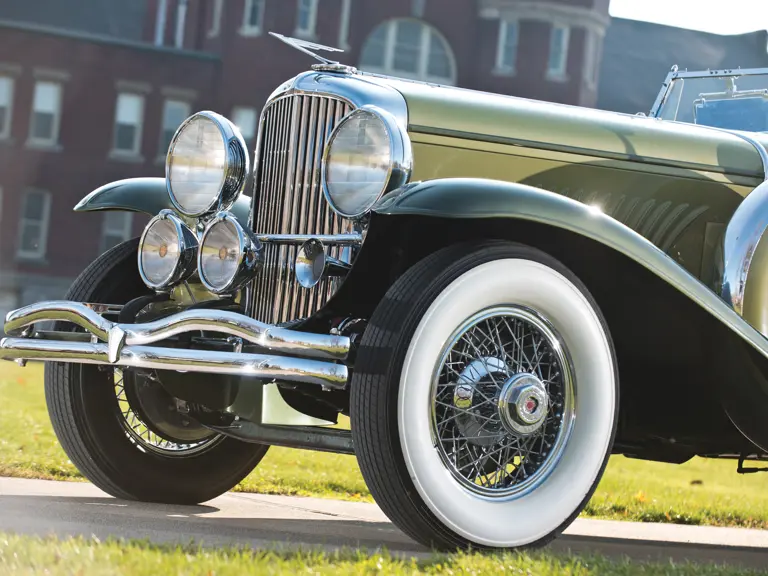

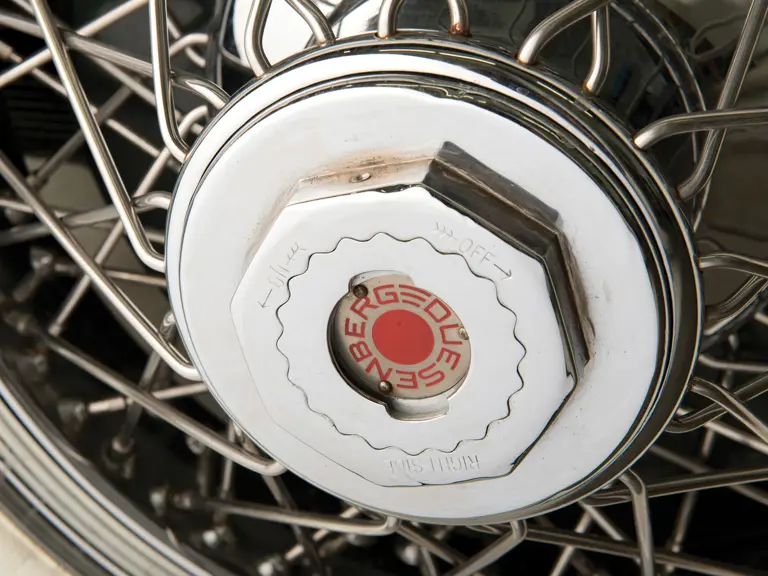
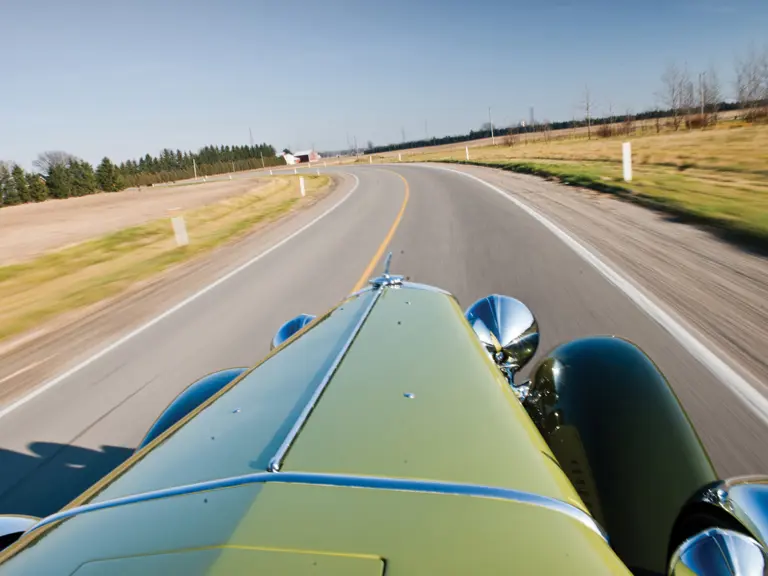



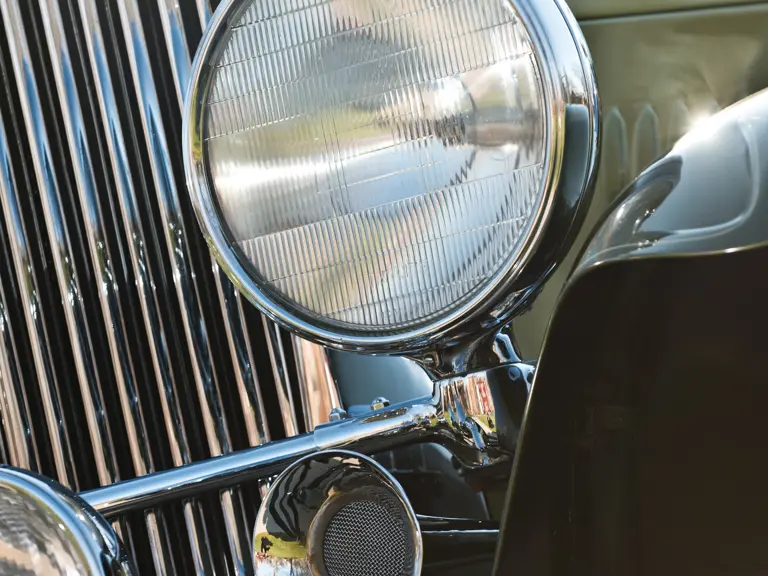
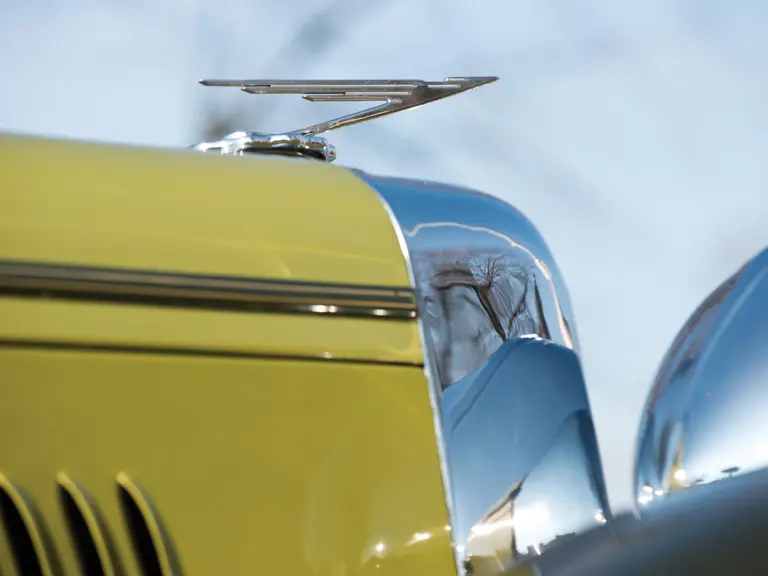


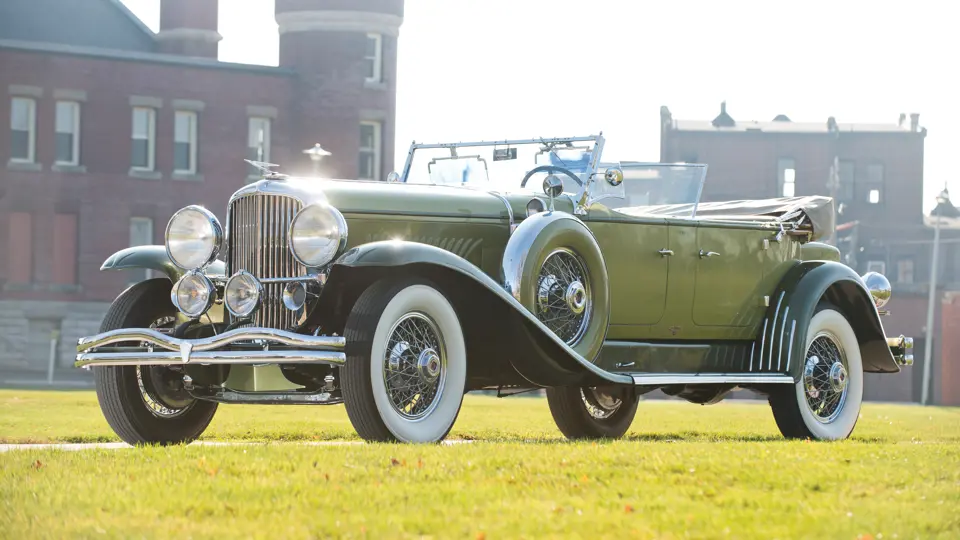
 | Phoenix, Arizona
| Phoenix, Arizona


